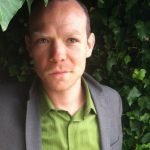Node Smith, ND
A new theory on sleep health is beginning to question commonly held beliefs about insomnia. The theory comes from sleep habits of individuals in Victorian times.
“Biphasic” sleep pattern
Before electric lighting was commonplace in homes, people would typically go to bed when it got dark and sleep about 5 hours and wake up. For about an hour or so they would do chores around the house, read, relax, or be intimate and then lay back down for round two of sleep. This is called a “biphasic” sleep pattern.
Many people are inclined to sleep in this manner, referring to it as insomnia
Many people are inclined to sleep in this manner and may be frustrated by the inability to fall immediately back asleep when they wake up 4-5 hours into the night, calling it insomnia. It is very common for people to wake up around 2 or 3 am and have difficulty going back to bed. Then a second sleep phase happens just before morning and they wake up feeling a lack of restfulness.
Solution: embrace more of a “Victorian” sleep pattern
The solution to this issue may actually be to embrace more of a “Victorian” sleep pattern, and actually get up in the middle of the night for an hour or so. Doing this may actually allow the second sleep phase to be a little more refreshing.
Two elements of this sleep schedule to keep in mind
There are two elements to this sleep schedule that are important to keep in mind. One, that it is important to actually get up out of bed, or fully wake up and participate in something that isn’t “trying to get back to sleep.” This task should definitely not be looking at any screen – the blue light from the screen will indicate to the brain that it is morning and begin to reduce melatonin. Read a slow paced book, write in a journal, clean the kitchen, or just walk around the house and relax on the couch. Then when actual tiredness settles in again, lay down for a second round of sleep.
The second element to keep in mind with a biphasic sleep pattern is that it is especially suited for going to bed earlier, in conjunction with darkness. By going to bed earlier, the four or five hour mark of the first phase of sleep happens earlier in the night as well – 1-2 am instead of 2-3 am or later. This means that the second phase of sleep will be a little longer and more likely to result in waking refreshed.
Image
 Node Smith, ND, is a naturopathic physician in Portland, OR and associate editor for NDNR. He has been instrumental in maintaining a firm connection to the philosophy and heritage of naturopathic medicine among the next generation of docs. He helped found the first multi-generational experiential retreat, which brings elders, alumni, and students together for a weekend camp-out where naturopathic medicine and medical philosophy are experienced in nature. Four years ago he helped found the non-profit, Association for Naturopathic ReVitalization (ANR), for which he serves as the board chairman. ANR has a mission to inspire health practitioners to embody the naturopathic principles through experiential education. Node also has a firm belief that the next era of naturopathic medicine will see a resurgence of in-patient facilities which use fasting, earthing, hydrotherapy and homeopathy to bring people back from chronic diseases of modern living; he is involved in numerous conversations and projects to bring about this vision.
Node Smith, ND, is a naturopathic physician in Portland, OR and associate editor for NDNR. He has been instrumental in maintaining a firm connection to the philosophy and heritage of naturopathic medicine among the next generation of docs. He helped found the first multi-generational experiential retreat, which brings elders, alumni, and students together for a weekend camp-out where naturopathic medicine and medical philosophy are experienced in nature. Four years ago he helped found the non-profit, Association for Naturopathic ReVitalization (ANR), for which he serves as the board chairman. ANR has a mission to inspire health practitioners to embody the naturopathic principles through experiential education. Node also has a firm belief that the next era of naturopathic medicine will see a resurgence of in-patient facilities which use fasting, earthing, hydrotherapy and homeopathy to bring people back from chronic diseases of modern living; he is involved in numerous conversations and projects to bring about this vision.